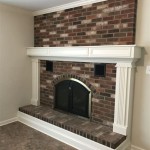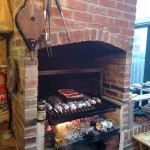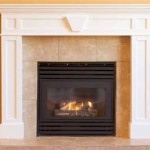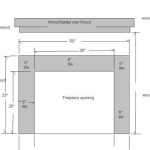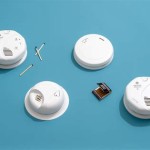Child-Proofing Your Fireplace: Ensuring Safety and Preventing Accidents
Fireplaces, while providing warmth and aesthetic appeal, can pose significant safety hazards to young children. Their inherent design, involving open flames, hot surfaces, and potentially sharp edges, necessitates proactive child-proofing measures. A comprehensive child-proofing strategy minimizes the risk of burns, injuries, and other accidents associated with unsupervised interaction with a fireplace.
Effective child-proofing extends beyond simply stating "don't touch." It requires a multi-faceted approach that incorporates physical barriers, diligent supervision, and age-appropriate education. Understanding the specific dangers associated with different types of fireplaces and implementing targeted safety solutions is crucial for creating a safe home environment for children.
Establishing a Physical Barrier
The most effective method of preventing children from accessing a fireplace is to establish a physical barrier. Fireplace screens are commonly used for this purpose, but not all screens offer adequate protection against curious toddlers and young children. Opt for a sturdy, heavy-duty screen constructed from durable materials such as wrought iron or steel. The screen should be tall enough to prevent children from reaching over it and wide enough to cover the entire opening of the fireplace, including any potentially hot surrounding surfaces.
Consider a fireplace gate or play yard designed explicitly for child safety. These gates usually feature a solid, enclosed structure that completely surrounds the fireplace, creating a safe zone. Ensure the gate latches securely and is difficult for a child to open. These gates are particularly advantageous for homes with active toddlers who are constantly exploring.
When selecting a physical barrier, prioritize models that are securely anchored to the surrounding walls or floor. This prevents the screen or gate from being easily toppled over by a child pushing or pulling on it. Regularly inspect the barrier for any signs of damage or wear and tear, such as loose screws, broken hinges, or weakened supports. Replace or repair damaged components immediately to maintain optimal safety performance.
Addressing Surface Temperatures
Even with a physical barrier in place, accessible surfaces around the fireplace can still reach dangerous temperatures. Brick, stone, and metal components can retain heat long after the fire has been extinguished. Padding these surfaces with heat-resistant materials can significantly reduce the risk of burns.
Corner guards, specifically designed for fireplaces, are available to cushion sharp edges and corners. These guards typically adhere to the surface using a strong adhesive and provide a soft barrier against accidental bumps and falls. Choose corner guards made from fire-retardant materials to ensure they do not contribute to fire hazards.
Consider using heat-resistant mats or rugs to cover the floor area immediately in front of the fireplace. These mats provide an additional layer of protection against hot embers or sparks that may escape the fireplace. Ensure the mat is securely in place to prevent tripping hazards. Regularly check the temperature of surfaces around the fireplace, especially after use, to identify potential hot spots and take appropriate measures to insulate or protect them.
Implementing Safety Practices and Education
Physical barriers and surface protection are essential, but they are not substitutes for vigilant supervision and age-appropriate education. Never leave children unsupervised near a lit fireplace, even for a short period. Emphasize the dangers of fire and hot surfaces to children in a manner they can understand.
Teach children to maintain a safe distance from the fireplace, even when it is not in use. Explain that the fireplace and surrounding areas are not play areas and should not be touched. Use clear and simple language to convey the potential consequences of interacting with fire, such as burns and injuries.
Store matches, lighters, and other fire-starting materials in a secure location, out of reach of children. Consider using child-resistant lighters that require multiple steps to ignite. Regularly review fire safety rules with children, reinforcing the importance of staying safe around fire. Practice fire drills with the family to ensure everyone knows what to do in the event of a fire emergency. This includes establishing a meeting place outside the home and practicing a safe evacuation route.
Finally, consider installing smoke detectors and carbon monoxide detectors throughout the home, especially near sleeping areas. Regularly test the detectors to ensure they are functioning correctly. These devices provide early warning of fire or carbon monoxide hazards, allowing for prompt evacuation and potentially saving lives. Remember that child-proofing is an ongoing process that requires continuous vigilance and adaptation as children grow and develop.

Diy Baby Proofing Your Brick Fireplace Thisaveragemom

How To Baby Proof A Fireplace Diy Hearth Cushion Simply September

3 Ways To Baby Proof A Fireplace Wikihow

How To Baby Proof A Fireplace Diy Hearth Cushion Simply September

Baby Proof Fireplace Hearth Proofing

How To Baby Proof Fireplace Important Checklist

Fireplace Baby Proofing Here Is My Quick Solution To Keep Newly Crawling Out Of The Proof Cover Up

Babysafetyfoam Com Baby Proofing Fireplace Hearth Guard Bumper Pad Safety Cushion Cover Protection

Baby Safety Foam Soft Seat Edge Cushion Fireplace Hearth Guard Bumper Pad Child Proof Padding De

How To Baby Proof Your Fireplace Pa Guide Proofing Home Safety
Related Posts

